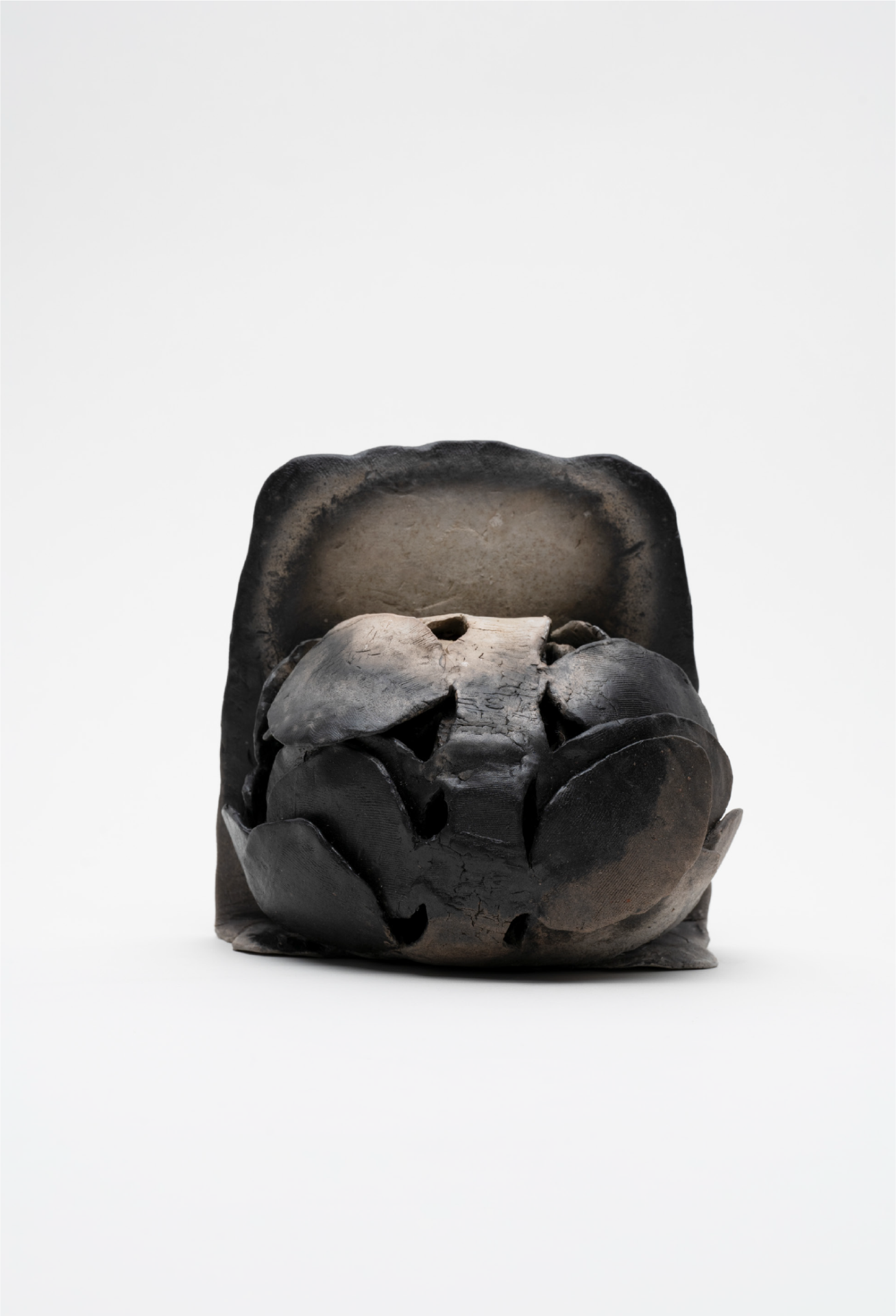- 〈日本人の美意識〉
- 出版:中公文庫
梅本 孝征
Takayuki Umemoto
- 「Four-word experiment」
- 『日本人の美意識』での美的表現の根幹をなす概念「暗示、または余情」、「いびつさ、ないし不規則性」、「簡潔」、「ほろび易さ」を創作のプロセスに置き換え、日本人の美意識を実験的に表現した作品。制作工程は、①整然たる長方形の粘土板に文字の印刻(暗示)、②叩く、丸める等の変形(いびつさ)からの薄作り(ほろび易さ)と空間ある造形(暗示)、③素地感の表出(簡潔)と天然無彩色の表現(ほろび易さ)となる炭化焼成。
- This work is an experimental expression of the Japanese aesthetic sense, replacing the concepts of "suggestion, or lingering emotion," "distortion or irregularity," "simplicity"and "fragility"—which form the core of aesthetic expression in The Japanese Aesthetic Sense—with the process of creation. The production process consists of: (1) engraving letters onto a neat rectangular clay plate (suggestion), (2) deforming the clay through pounding, rounding, and other methods (irregularity), followed by thinning the clay (fragility) and shaping it to create space (suggestion), and (3) carbonizing the piece to reveal the sense of the base (simplicity) and expressing natural colorlessness (fragility).

